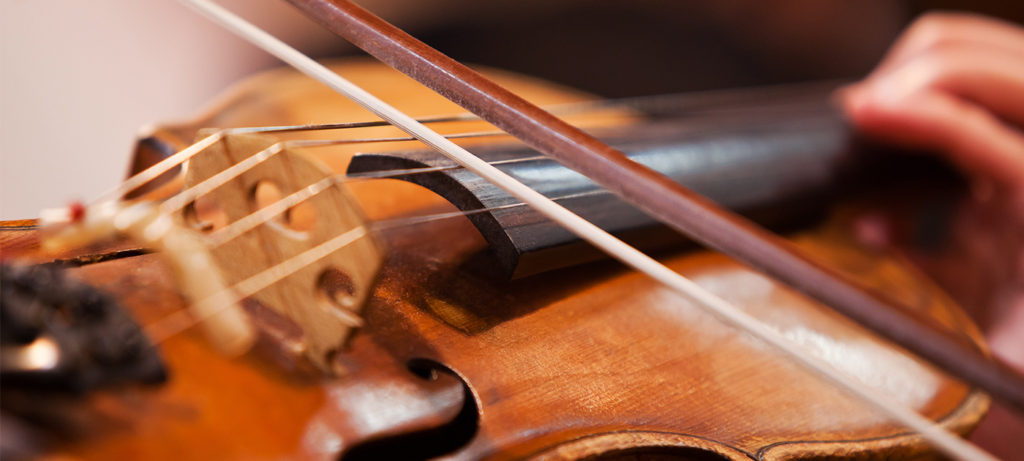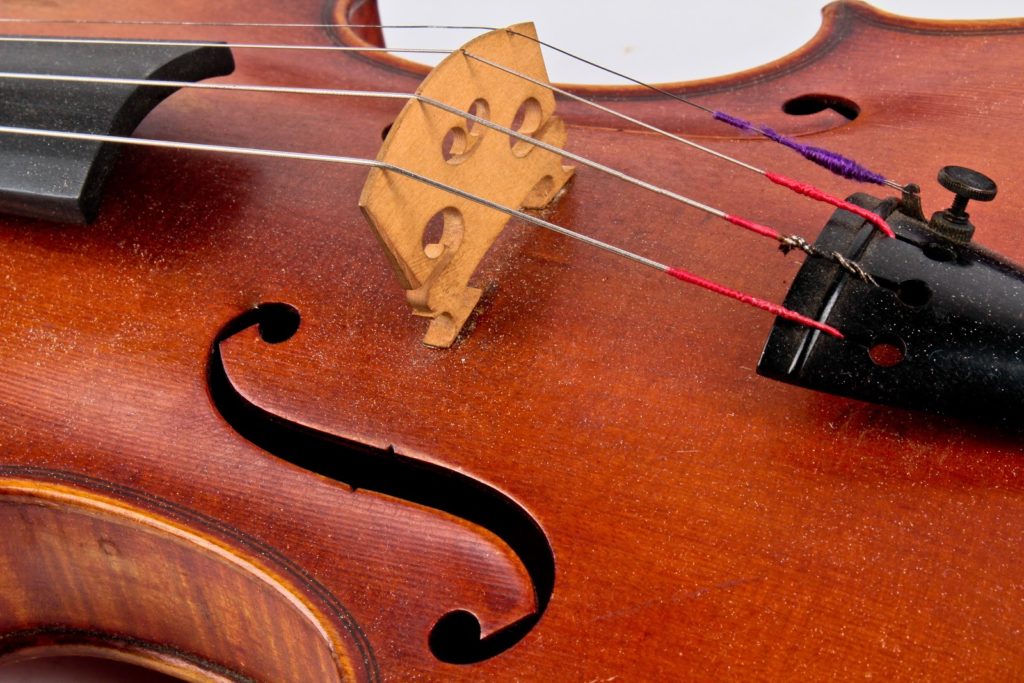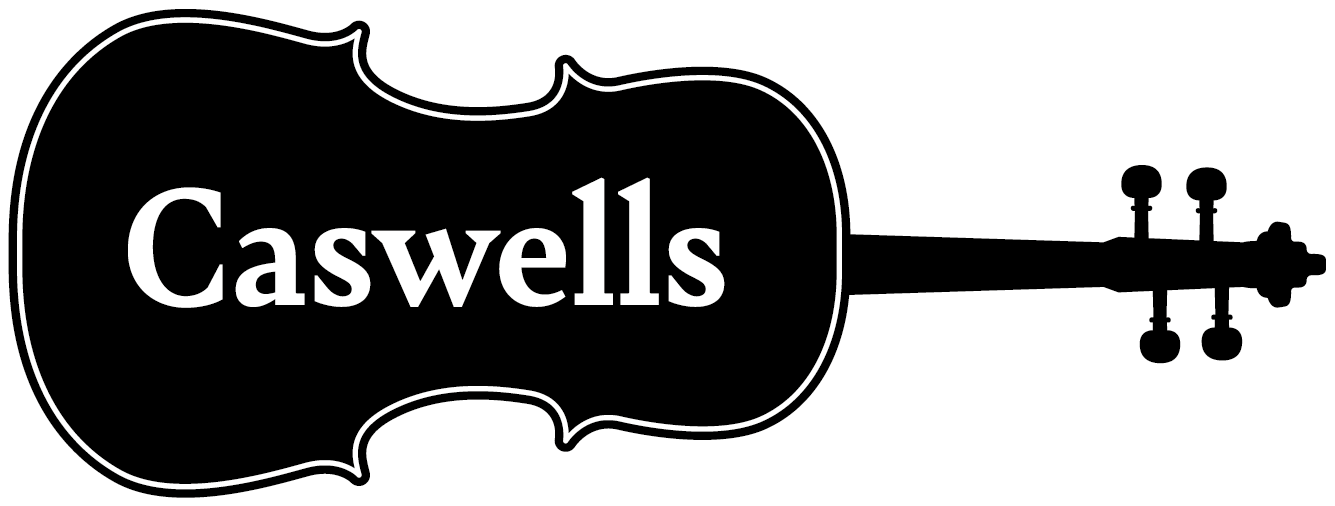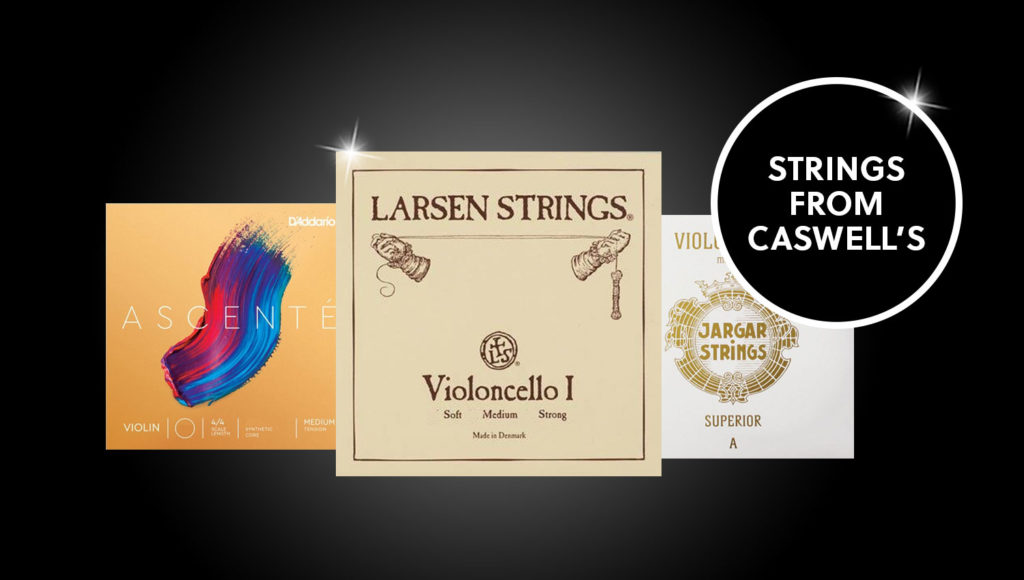How to Choose Violin Strings

When it comes to violin strings there is no one-size-fits-all solution. Every violin is different and will, therefore, react differently to different brands of strings. Whilst one type may sound exceptional on one violin, it may sound dull or too bright on another.
When you consider the sheer number of violin strings available, it’s no wonder that many students, strings teachers and parents find selecting the best strings for a violin overwhelming.
That’s why we put together this violin string guide to get you started.
Matching Violin Strings to Your Playing Style
Each violin will have its own tonal characteristics and, similarly, every violinist has unique needs and a unique playing style. Experimenting with different strings on your violin is a great way to fine-tune its sound.
However, unfortunately, it’s not realistic to try every type out there, which is why it’s good to swat up on the violin strings basics to narrow down your search. By understanding the qualities of its core, string gauge, string tension, and the general playing qualities of each brand, you can make an educated guess about a string’s sound.
But first, consider what sound you want your instrument to produce and what sound it is producing now with your current strings. Are you finding the strings difficult to play? Do you want the sound to be louder or the strings to be more responsive? These questions will be crucial in your search for the best violin strings for you.
Which Violin String Core Should You Choose?
There are three main core types for violin strings: Gut, Steel and Synthetic. Each type will vary in playability, volume and responsiveness.
Gut Violin Strings
Gut core strings have been around since the 16th century, typically made from sheep intestines. Today you have a choice of pure gut core or a gut core wrapped with silver or aluminium. Gut strings are known for having the best tone, with a warm, rich sound with many complex overtones.
However, they do take longer to stretch than synthetics and are the most difficult type to play. Once stretched they are generally stable but can be temperamental and susceptible to changes in temperature or humidity, whether that be due to weather or stage lighting. They also tend to require more tuning than synthetic and steel strings.
More advanced intermediate/professional violinists playing Baroque or other historical styles often prefer gut strings for the quality of sound.
Steel Strings
The steel E string was introduced at the beginning of the 20th century, which was then followed by other steel core strings with various windings. The core is covered by metals, such as silver or steel, and the result is a string with a quick response and a clear, focused tone.
Whilst steel violin strings will produce a loud and bright sound, they won’t have the warmth or tonal complexity of gut or synthetic strings.
As they are the least expensive option, and also the easiest to play, steel strings are great for beginners just starting out with the violin. They’re not affected by changes in the atmosphere, giving students the chance to practice without having to worry about tuning their violin often.
Synthetic Violin Strings
Synthetic core strings are more stable than gut strings with a more focused tone and fewer complex overtones. They were invented in the early 1970s when Thomastik-Infeld, a leading name in the violin strings market, began producing the revolutionary Dominant strings made from nylon perlon. These were an instant success – some would even say that Dominant strings changed violin playing forever and synthetic strings have since become the most popular choice for violin.
After the success of Dominant, manufacturers created a variety of new synthetic strings using other high-tech nylons and composite materials, combining different synthetic materials for a more complex sound. Whilst they do not have quite the complexity of sound achieved with gut strings they have interesting and sophisticated tonal characteristics.
As they share some of the warm qualities of gut strings but benefit from a much more stable pitch, and also have the stability and durability of steel, they are recommended for beginners moving into the intermediate level. They’re a natural progression from steel and easier to play than gut, retaining their tune longer and being less susceptible to temperature changes.
Choosing Violin String Gauge
The violin string gauge is its thickness. Different gauges will influence the tone produced; a thicker string will achieve more volume and centre to the tone but will have a slower response. A thinner string, on the other hand, will produce a brighter, more responsive sound but lower in volume.
Choosing gauges ultimately comes down to preference. If you are having trouble projecting sound, for example, you should opt for a thicker string, and if you are looking to produce a softer volume then go for a thinner gauge. It is always best to start with medium gauge violin strings first and then move onto a different gauge if you are trying to experiment and fine-tune the tone of the violin.
When you are browsing for violin strings online with Caswell’s Strings, you can filter your search by selecting your preferred gauge. Gauges range from thin to extra thick, if you are a beginner student or a teacher looking to purchase a student violin then we would recommend searching for medium gauge violin strings.

Choosing Violin String Tension
The violin string tension is one of the biggest factors determining the differences in tone produced by the different types of strings and is often confused with string gauge. String tension is either light (weich or dolce), medium or heavy (stark or forte). These correspond with string gauges, so thin gauge strings will have a lower tension and thick gauge strings will have a higher tension.
Gut strings tend to have a lower average tension than either synthetic or steel core strings. You can feel this lower tension as pliability under the fingers, in other words, the strings are easier to press down. Synthetic strings have a higher tension than gut strings and steel core strings tune up to a higher tension better than any other type.
Again, it is best, to begin with, medium gauge strings with medium tension first and then move into a different gauge if you feel improvement needs to be made.
The Best Violin Strings for Beginners
D’Addario Prelude
The D’Addario Prelude Violin Strings are a hugely popular choice for student violin strings due to their unique blend of warm tone, durability and value. Manufactured with a medium tension solid steel core, which is optimised to create the warmest violin strings for students on the market. Prelude strings are a durable and economical option and are unaffected by temperature and humidity changes. They are relatively bright, but without the shrill sound of very cheap alternative steel core strings, and are easy to bow.
All D’Addario strings are designed, engineered and manufactured in the USA to the most stringent quality controls in the industry.
D’Addario Helicore
The D’Addario Helicore Violin Strings have a narrower core diameter, giving them a quick bow response.
The stranded steel core provides optimum playability for beginners and produces a clear, warm sound. Both pitch stability and string longevity are excellent. Helicore is also often used as the preferred string for electric violins.
Pirastro Tonica
An inexpensive synthetic core set offering an alternative silvery E and an Aluminium D. They are also available in small sizes.
There are a great many brands which we cannot list here and each has a place – please do look on the website or phone for qualified advice.
The Best Violin String Brands for Advancing Players

Thomastik Dominant
The Thomastik Dominant Violin Strings set is probably the world’s best-selling set of violin strings. For many years they have been trusted and recommended by teachers and students across the globe with their familiar warm, soft and clear tone. Dominant strings are widely recognised as the string by which all others are measured, legendary for their distinctive tone and is very easy to play. The synthetic core means they are not affected by changes in temperature or humidity and they are long-lasting.
Thomastik Vision
Wound on an advanced synthetic core, Vision Violin Strings are designed to settle in quickly and to achieve a stable tuning within a very short time. They impress with a focused, clear, open and brilliant tone; a perfect fit for today’s modern sound. Vision strings can be mixed with almost any synthetic core string, if you are starting to experiment with mixing strings on your instrument this is a great option.
Pirastro Obligato
The Pirastro Obligato Violin Strings are widely considered as the ‘all-round’ synthetic core string, used and loved by professional players worldwide. They have a warm and rich tone with good volume and excellent uniformity across all strings. Being synthetic, Obligato violin strings are very stable and resistant to changes in temperature and humidity, which is why they are also popular amongst advancing students.
Pirastro Evah Pirazzi
Pirastro Evah Pirazzi Violin Strings have an enormous dynamic range with exceptional playability and outstanding response. Compared to Obligato they are generally brighter in tone. Due to the synthetic core, Evah Pirazzi strings are very resistant to changes in temperature and humidity.
Signs You Need to Change Your Violin Strings
If you are finding that getting in tune and staying in tune is becoming more challenging than normal then it may be time to change your violin strings. Other signs include the tone sounding flat, and if you’re noticing rust, discolouration or your strings unwinding. When strings are starting to unwind and expose the core this means it’s definitely time to start looking for your next set of strings.
Summary:
- Getting in tune and staying in tune is difficult
- Tone sounds flat
- Noticing a build-up of rush, discolouration or strings unwinding
- The core is being exposed due to unwinding
Where to Buy Violin Strings
At Caswell’s Strings, we stock an extensive range of violin strings from many of the leading brands on the market, with options suitable for all levels of playing from beginners to professionals. You can browse our violin strings brands online or alternatively come visit us in-store in Banbury, where you’ll have our expert team on hand to guide you in your decision.
Recommended articles for you…
Buying a Violin: What to Know and What to Check
This article was checked by the director of Caswell’s Strings, Lance Tunley who is an experienced purveyor of stringed instruments and accessories with over 30 years of experience in the field.








